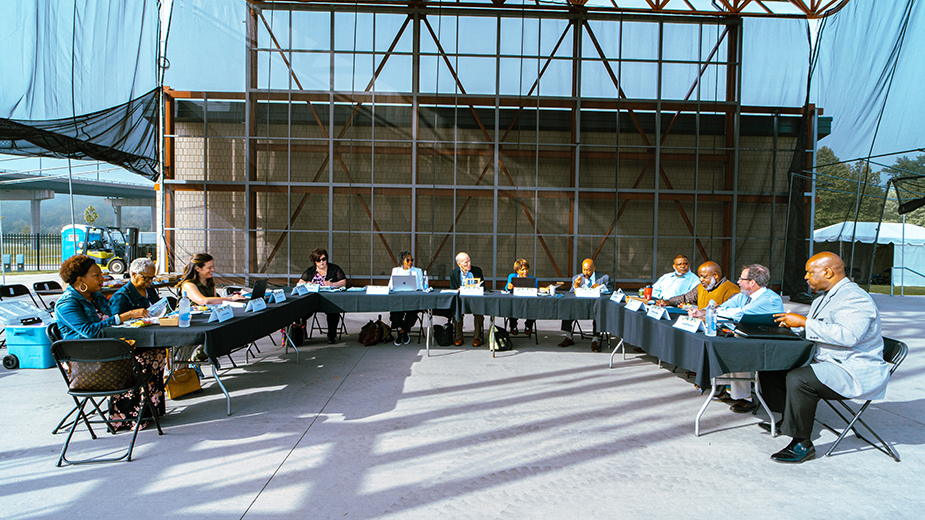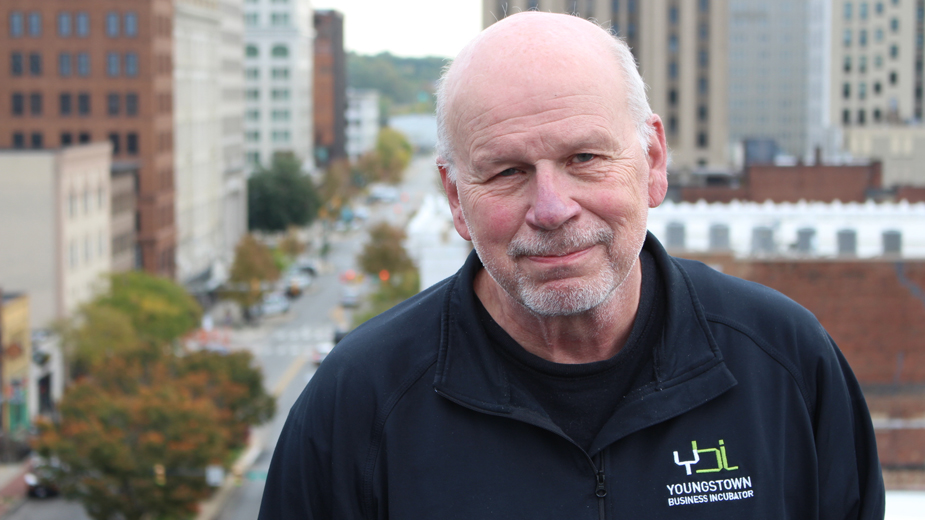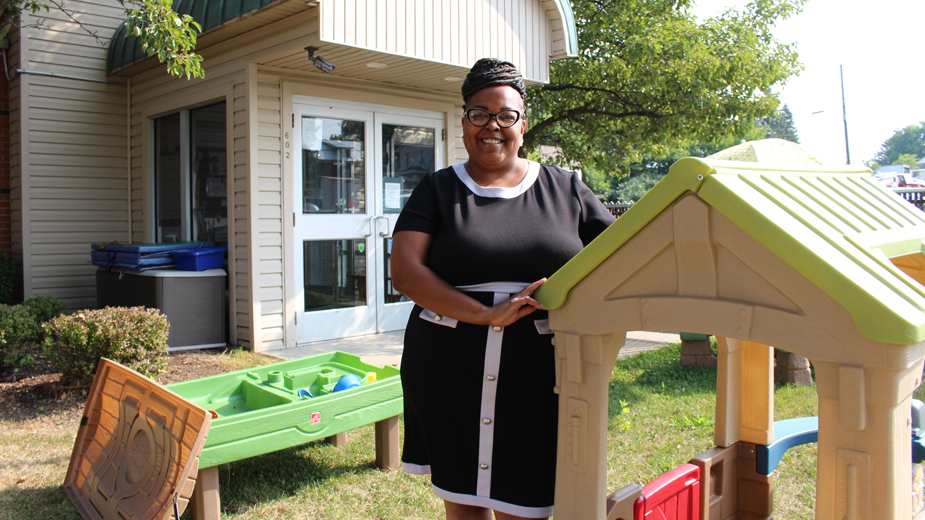YMCA’s Impact Goes Well Beyond Fitness
YOUNGSTOWN, Ohio — In September 2017, Richard Balog had “a bump” a bit smaller than a tennis ball surgically removed from behind his ear. His doctor said there was a 2% chance it was cancerous.
“Well,” Balog says, “I ended up with the 2%.”
Chemotherapy cleared up the 78-year-old’s cancer, but the treatments left him 30 pounds lighter and sapped his strength. His oncologist suggested he join the LiveStrong program at the YMCA of Youngstown. Six weeks in, Balog says his strength and endurance have improved, for which he credits the support of the eight other cancer survivors in his cohort.
“We all work together,” he says. “They take care of me and I try to take care of them.”
LiveStrong is just one example of the YMCA’s commitment to healthy living, which is one peg in its mission that includes youth development and social responsibility. And it’s a mission that goes beyond just fitness, says its president and CEO, Tom Gacse.
“The YMCA is a place where you belong,” he says. “You’re not a member of a fitness facility. You’re actually a part of a cause.”
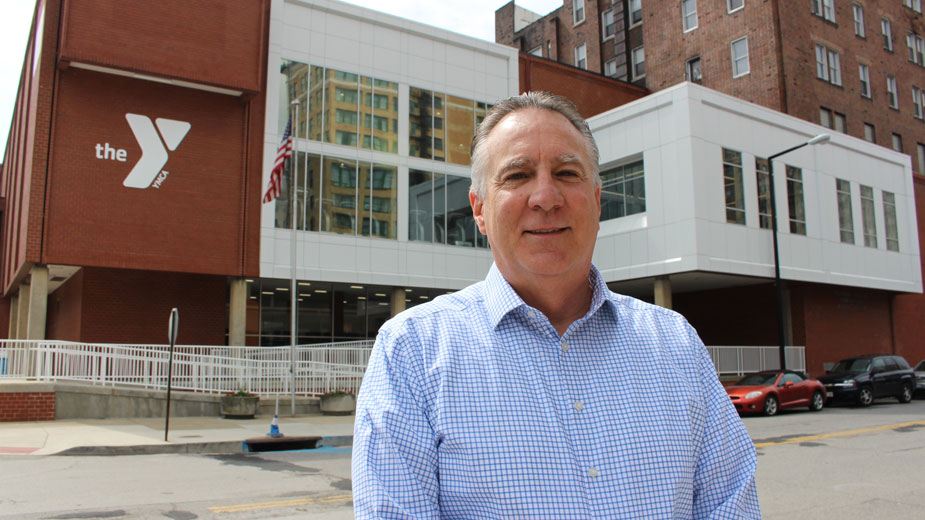
Pictured: Tom Gacse, president and CEO of the YMCA of Youngstown.
Some of the Y’s 50 full-time staff are involved with the programs, as well many of its 1,227 volunteers and nearly 700 part-time workers, he says. Gacse is personally involved with LiveStrong, speaking at each cohort’s closing ceremony and sometimes sitting in on the weekly meetings. His mother died of colon cancer and his brother from Hodgkin lymphoma at 32.
“To hear the stories from the LiveStrong participants after each cohort is completed, it just touches your heart,” he says. “And they create a bond at the end of the program that they stay friends forever.”
Others are inspired to continue the cause. Joyce Kohler, 62, joined the LiveStrong program when she was diagnosed with breast cancer two years ago and became a certified instructor after completion.
“When you see the people come in, they’re scared, just like I was,” she says. “This way I can tell them, ‘I’ve been in your shoes. I know where you’re coming from.’ ”
LiveStrong has eight coaches and has served more than 120 survivors since the first cohort in 2014, says Loretta Pflug, the Y’s wellness program coordinator. Participants spend 13 weeks working on cardio, strength, flexibility and balance.
“We work at a snail’s pace,” Pflug says. “The overall goal is to reduce symptoms of treatment and/or the disease.”
 LiveStrong cohort: (front) Linda Simon and Ron Fasano, (middle row) Mary Wright, Sheila Kroll-Dickinson, instructor Joyce Kohler, traider Sara Piper, Diane Fox, Richard Balog and YMCA CEO Tom Gacse (back).
LiveStrong cohort: (front) Linda Simon and Ron Fasano, (middle row) Mary Wright, Sheila Kroll-Dickinson, instructor Joyce Kohler, traider Sara Piper, Diane Fox, Richard Balog and YMCA CEO Tom Gacse (back).
Programs like LiveStrong, diabetes prevention and enhanced fitness are central to the Y’s efforts to promote healthy living, Pflug says. As illnesses like cancer, diabetes, Alzheimer’s disease and some metabolic diseases become more prevalent, “the Y needs to be proactive,” she says.
“We want to reach into those communities and offset or help reduce the risks of some of these diseases,” she says. “We also want those who have been affected to know they can still work physically. They can still feel good and improve their life in general.”
This year, the YMCA of Youngstown started workplace wellness programs through a grant from the Ohio Bureau of Workers’ Compensation. To date, nearly 20 organizations have enrolled, Gacse says.
“We track the metrics, we get the results and then we work with them to improve what the results are,” he says. “We feel that’s a real connection for us where we can reach out to the community and they can partner with us.”
Such partnerships are important to the Y’s success in making an impact. A partnership with the United Way of Youngstown and the Mahoning Valley and Youngstown City Schools provided swim lessons to more than 700 children from the school district last year.
“At our Davis Y, we’ve tested and approved over 2,600 children in deep- water swim tests,” Gacse says. “Most of the people I talk with learned to swim at a YMCA.”
Summer enrichment camps at the Davis Family and Central YMCAs serve more than 1,300 kids annually. From June 11 to August 24, students engage in physical activities as well as educational programming to prevent summer learning loss, says Nicole Murray, the Y’s day camp, youth and teen director.
“I actually have licensed teachers who come here every single day,” she says. “Science, math, history, technology, engineering – everything that they need so that when they go back to school, they’re going to succeed.”

Pictured: Central YMCA day camp counselors Bethany Haddle (front), Michael Stevens and Maddie Pacifico play Shapes and Colors Twister with teacher Chelsea Danielle and campers Jaream Rutlbeg, Dennis Brown and Kashmere Wolmack.
The Davis YMCA serves about 150 children daily while the Central Y sees between 30 and 40, all between the ages of six and 13. When Murray started as a counselor in 2006, only 50 children attended the Davis camp, she says. The response to the camps has been positive, with parents seeing improved behavior from their kids and better grades after camp, she says.
“The percentages on their report cards are a lot higher than they normally are,” she says. “They don’t feel like they’re falling behind when they go back to school.”
Impact Maker
Alexandria Baklarz, Day Camp CA Coordinator
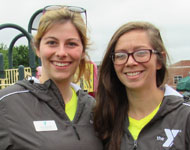
From Camper to Counselor, Baklarz Makes an Impact
It’s natural to not want to leave summer camp. So when Alexandria Baklarz turned 14 – too old to be a camper – she found a way to stick around the summer day camp at the Davis Family YMCA in Boardman.
Baklarz volunteered as a counselor apprentice, or CA, until she was 18 and then took a job there as a counselor and CA Coordinator. As coordinator, she’s in charge of helping other volunteers transition from being a camper to a CA.
“I just loved coming back every single summer and I loved being at camp,” Baklarz says. “I wanted to keep coming back and I wanted to give back all the experiences that I had, which were amazing.”
Of all the experiences Baklarz had as a camper, the field trips especially stand out. Campers take trips to “so many amazing places,” including museums, baseball games and waterparks, she says.
“You really get to travel around a lot,” she says. “And for those kids who don’t get to travel a lot with their parents, families or schools, this is really an amazing opportunity for them.”
Baklarz started camp in the second grade and knew she wanted to be a counselor by the time she was 12, she says. As a counselor apprentice, she helped set up daily activities and served as the “eyes and ears for the camp counselors,” which made the transition weird at first, she admits. At first she was only a year older than some of the oldest campers, some of whom were friends, “So I couldn’t tell them to knock things off.”
However, it’s that closeness in age, she says, that makes CAs such a vital part of the camp environment.
“Campers are more likely to open up to the volunteers, especially the older campers, because they’re closer in age,” she says. “They’re at that in-between stage and they’re important to helping this camp run smoothly.”
As coordinator, Baklarz oversees about 10 CAs at the Davis day camp, some of whom are in their second, third and fourth years and will likely become counselors in the next year or two, she says.
The volunteer experience helps teenagers develop leadership and social skills, which is something that she takes seriously, she says.
“A lot of these kids, they’re between 14 and 17 and some of them are going through that awkward phase where they don’t know where they fit in,” she says. “Camp makes a place for them to fit in and become themselves and really open up. It’s such an amazing feeling to continue to give back and help volunteers become leaders.”
And Baklarz is putting those leadership skills to practice herself.
A 2016 graduate of the University of Mount Union, she just completed her second year as a part-time reading teacher at Market Street Elementary in the Boardman Local School District. Working at the camp served as inspiration for her career path, she says.
“I realized that I wanted to work with children my whole life,” she says. “And as I went through my volunteer years, that’s when I realized I wanted to be a teacher. So that’s what I did.”
The YMCA Camp Fitch in North Springfield, Pennsylvania, serves more than 10,000 children each year with summer programming as well as short-term camps and retreats during the school year, says Executive Director Matt Poese.
This year, the camp is developing programs in science, technology, engineering and mathematics, or STEM. Camp Fitch looks to “offer more natural experiences that are aligned with STEM,” including wetlands investigation and water quality experiments, he says. “We want the end to be discovery and exploration of the natural world.”
Next spring, Poese hopes to break ground on a maker hub with 3D printers, chemistry equipment and wood and metal shops, he says. In addition to gaining knowledge and experience in the STEM fields, the hub will emphasize soft skills, including teamwork, risk-taking, independent thinking and persevering through failure, he says.
“Failure is the path through which we learn everything,” he says. “We’re trying to give kids the tools to work through those situations.”
Financial assistance for camp is available. For day camp, families can qualify for up to 70% of the cost. About 90% of Central Y families and half of Davis Y families receive financial assistance for day camp tuition, while a partnership with Neighborhood Ministries in Campbell provides free breakfast and lunch to children attending the Central Y camp.
Through the YMCA of Youngstown’s annual fundraising campaign, 368 kids attended Camp Fitch with financial assistance last year, Gacse says. Funds helped 996 families and individuals receive YMCA memberships as well, including 152 children.
“Nobody is turned away because of an inability to pay,” Gacse says. “Social responsibility is a big part of what separates us from for-profit fitness facilities.”
This year, the YMCA of Youngstown looks to raise $700,000 to support its programming, including LiveStrong and ArtReach, Gacse says. “There are donors who give every year. And we just appreciate all the support that we get through that.”
Since 2015, ArtReach has brought art education to communities that don’t typically have such opportunities. From nursing homes and assisted living centers to the Rescue Mission of the Mahoning Valley and the Beatitude House, ArtReach uses art as a way to connect those populations to the community, says YMCA arts and humanities coordinator Suzanne Gray.
“We’re not what people think of when they think about the Y,” Gray says. “But art, as a universal language, really can make a difference.”
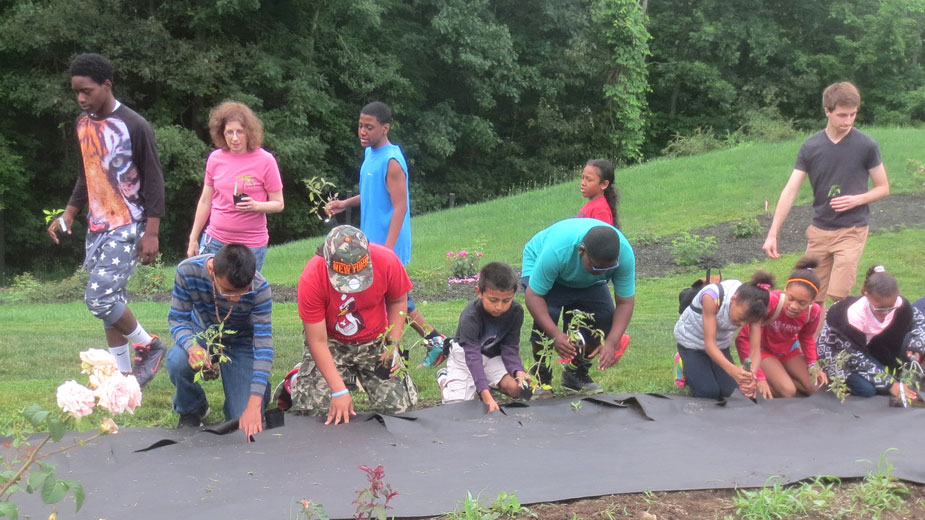
Pictured: Children from Casa Madre participate in a gardening program through ArtReach.
Whether through drawing, painting or writing poetry, the classes give participants an opportunity to express themselves, Gray says. “We have an obligation to go out into the community and help everybody achieve success, to be their best selves,” she says.
Kristina Rule, ArtReach team leader, recalls a class at the Compass Family and Community Services’ Daybreak Youth Crisis Center. One of the students was struggling with a still life drawing project.
“It was obvious to me that he was frustrated,” Rule says. “He didn’t necessarily want to do the project, or maybe didn’t think he could do the project.”
Rule helped the student complete the project “and he was so proud of himself,” she says. Later, while Rule was cleaning up the room, the student came back to thank her again.
“He worked himself through the problem. He persevered, and in the end he did it,” she says. “This can give them the idea that, ‘If I can work through this, what else could I do?’ ”
ArtReach class sizes range from three to 15 individuals, serving up to 150 across all classes, Rule says.
Annual art shows, such as But I Know What I Like and Five Squared, give students a chance to display their art. Five Squared solicits art from around the world and helped raise $4,200 for the program last year, Gray says.
“I am a huge fan of people’s talent being on display,” she says. “I think that is such a big, important part of the Y’s mission: to allow people to shine.”
Gray is taking a piece completed by the children at the Beatitude House to a library in Mexico and will return with a piece done by kids there. Another piece is being sent to children in Morocco, who will send back a piece.
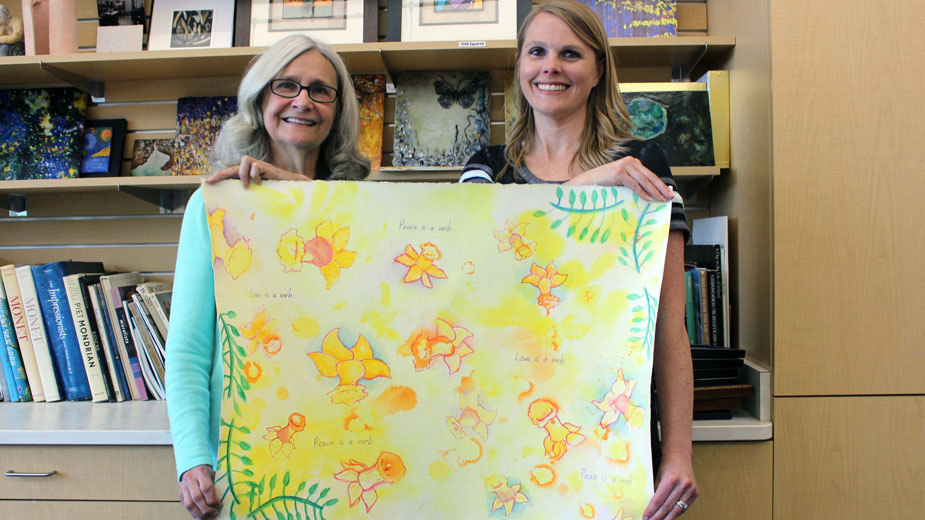
Pictured: Suzanne Gray and Kristina Rule display the art project being sent to Morocco.
How You Can Help
Community members can make a positive impact on the YMCA of Youngstown by making a donation or volunteering time to support the organization’s programs.
The simplest way to donate is through the YMCA’s website, YoungstownYMCA.org, by clicking the ‘Donate’ button at the top right of the page. From there, donors can navigate to a secure donation page where they can make a one-time gift or set up monthly donations at preset or custom amounts using their credit card.
Other options include making a donation in honor of someone’s memory, donating to a specific branch of the Youngstown YMCA and agreeing to cover any credit card transaction fees to ensure 100% of the donation goes to the YMCA.
Donors can also visit the Y and speak with President and CEO Tom Gacse. To discuss gifts to specific branches, donors can meet with Central Y Executive Director Mike Shaffer, Davis Y Executive Director Tom Grantonic or Camp Fitch’s executive director, Matt Poese. They will work with donors to ensure contributions are earmarked to any specified program, Gacse says.
“We’d love to sit down and talk with you and let you know all the different options that you have for giving, the different programs that you can support,” Gacse says. “We like to give feedback to the donors as to what happened to their funds and let them know the blessings that they’ve created.”
Numerous volunteer opportunities are also available and interested residents should stop in at either the Central or Davis YMCAs and inquire at the front desk.
“We’ve got lots of opportunities to give back to the community, and it’s rewarding,” Gacse says.
Copyright 2024 The Business Journal, Youngstown, Ohio.
